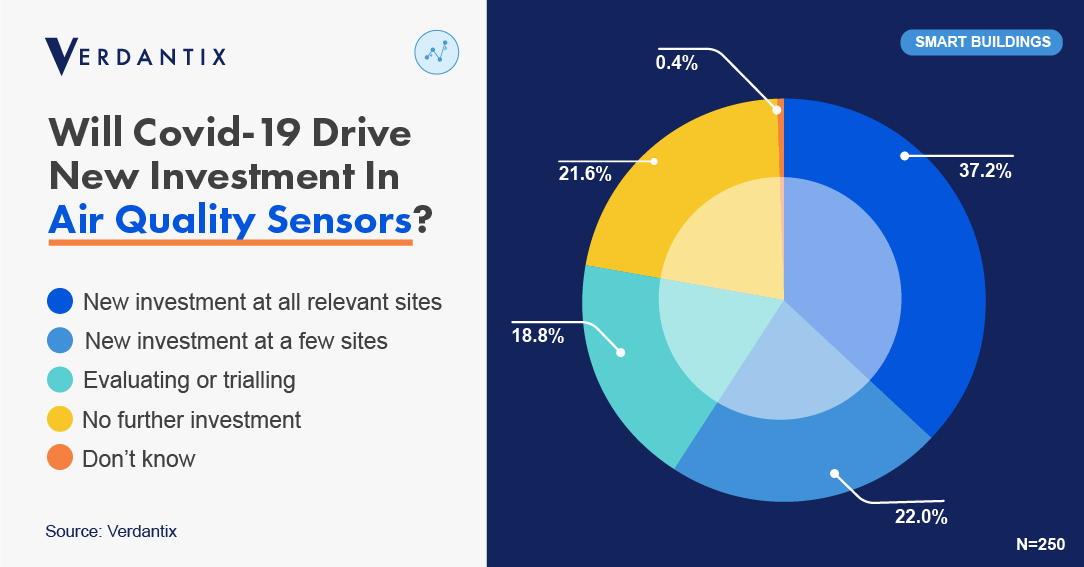COVID-19 Breathes New Life Into The Indoor Air Quality Monitoring Market

Ben Hext
Recent guidance from the US EPA and the WHO have highlighted that frequently replacing indoor air with fresh or sterilized air should be a key part of mitigating the risk of coronavirus spread in buildings. An increase in cleaning and sterilization has also lead to the contamination of indoor air with harmful products such as ozone and alcohols. This has sparked new interest in air quality management and driven firms to consider new strategies to bolster air quality in their portfolios.
To date, most building managers have implemented quick fixes and low-tech solutions with the aim of improving air quality. Firms are opening windows more frequently and increasing the cycling of indoor air with fresh air by HVAC systems. While these strategies are simple to manage, they can result in trade-offs. For example, energy consumption is often increased by opening windows and increasing air cycling, due to the power requirements of extra heating and air movement. Comfort also takes a hit. Witness parents are complaining about children working in freezing classrooms with open windows.
As more people return to the office, building managers are starting to look at more sophisticated strategies. According to the Verdantix Global Corporate Survey 2020, 59% of real estate executives are already planning a new investment in air quality sensors and analytics to gain new visibility on air quality. For example, specialist vendor Nuvap offers indoor sensors which can measure up to 26 environmental factors including gases, harmful chemicals, and common pollutants. This data can be used to warn occupants of high risk areas, and provide building managers with feedback on HVAC equipment performance.
Building managers are also exploring new solutions that enable them to optimize energy usage by ventilating used spaces only. For example, Ambisense has released air-monitoring wireless sensors and an analytics platform to predict when rooms will need ventilation, based on historic usage and room booking information. PointGuard’s Airflow Analysis Tool provides air quality monitoring in line with ASHRAE COVID-19 response guidelines, and gives building managers a view into indoor air quality along with other metrics such as average humidity, and rate of fresh air exchange.
Forward-thinking facility managers should act now to define new strategies for air quality management, so they can successfully minimize transmission risks as higher volumes of staff return to buildings. To learn more about best practices for re-opening buildings during COVID-19, read our report Beyond COVID-19: Emerging Best Practices For Occupant Health And Wellbeing.

About The Author

Ben Hext
Industry Analyst





